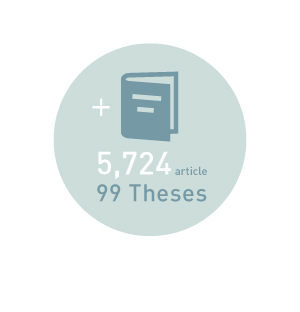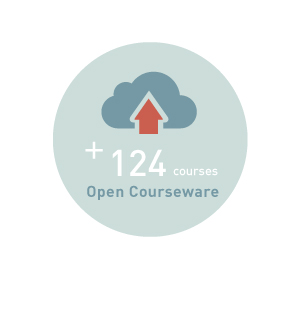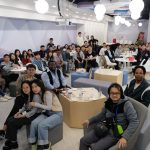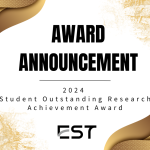About UST
National Central University, National Yang Ming Chiao Tung University, and National Tsing Hua University are all outstanding educational and research institutions in Taiwan. Each of these universities is unique, offering an exceptional record of achievements. Compared to world-class institutions, these universities may appear smaller in scale or lack certain disciplines. Recognizing the need to strengthen the integration of various academic areas within each institution to face intense international competition, the universities saw the advantage of establishing a university system that would combine their collective strengths in teaching and research. By integrating resources and leveraging complementary strengths, the goal was to enhance the quality of education and create a world-class university. As a result, these universities, together with the Ministry of Education, announced the “Integrated Plan to Promote a Research University” under the University System of Taiwan (UST) on October 8, 2003. After several rounds of applications and revisions, the plan was approved by the Ministry of Education, and UST was formally established on January 24, 2008.
Over the past eight years, UST has achieved significant milestones in developing and integrating complementary resources, which has greatly expanded the teaching and research capacities of the universities involved. For example, in 2002, the universities under UST published a total of 2,855 research papers, a number that doubled to 5,724 by 2010. National Tsing Hua University advanced from 223 in 2010 to 196 last year in the UK’s QS World University Rankings, while National Yang Ming Chiao Tung University moved from 306 to 290, and National Central University climbed from a 400-plus ranking to 398. Additionally, in the 2010 ARWU World University rankings compiled by Shanghai Jiao Tong University, seven Taiwanese universities, including all the UST members, were ranked among the top 500 worldwide. These achievements highlight the success of the Ministry of Education’s efforts to promote the integration of research universities (2002-2005) and to develop world-class universities and top research centers (2006-2010). The timely decision by the universities in 2002 to integrate their resources and capitalize on complementary strengths has led to remarkable growth. The universities will continue to collaborate in their pursuit of academic excellence and the goal of becoming a world-class institution. A summary of the integration’s results thus far follows.


1. Integrating educational resources
Common courses and inter-campus selection of classes, and sharing of distinctive courses:
These schools began their cooperation by sharing classes, offering mutual recognition of credits, and opening up inter-campus selection of classes and curriculum. As of the 2010 academic year these universities had 5,333 persons enrolled in elective courses (of which 3,853 people were enrolled in r elective long-distance learning and Internet courses). These universities are now jointly promoting an e-teaching system and building open courseware (OCW) in a total of 124 departments, and by 2011 had broken through the 3 million mark for total students. These universities set up general education courses beginning in 2009 to promote ‘Cultural Studies’ and ‘Technology and Society’, two courses which integrate aspects of both the humanities and research in social sciences research. The 2008 academic year saw ‘Sociological Imagination’, ‘Network Information Behavior’, and ‘Medicine, Health and Life’. These universities also introduced liberal roving courses, with NYCU(Yang-Ming Campus) offering ‘Medicine, Health and Life’ and continuing to hold it every year now. During the 2010 academic year five liberal distance learning lecture courses – ‘Brain and Learning’, ‘Introduction to Advertising’, ‘United States Poliics,’ ‘Marketing Management’ and ‘Culture and Music: Listening to Romeo and Juliet’ – were introduced. This was followed in 2011 with promotion of ‘Advancing into the Future: the Technology and Society Classic Series of Lectures’ featuring distance teaching which involved having teachers from each campus participate in discussions. These were followed in turn by ‘Water Resources: Technology and Life,’ a political course, as well as courses themed ‘Energy and Sustainable Development, ‘Controversy’ and ‘Health’.
Promoting conversion of student status so that students can attend classes at all these schools:
These universities now promote inter-institution courses and inter-campus transfers between departments for those pursuing a doctorate in order to provide students with better quality and a wide range of course choices. This enables students in the system to apply for student status transfers and to learn at any of these schools as easily as studying in one school.
Joint recruitment and admission to attract more outstanding new students:
Students in Master’s and Bachelor programs are also allowed to take inter-campus courses by enrolling in any one of these schools and passing the entrance exam.. In the 2012 academic year 3,010 students were signed up (including 408), and 2,440 signed up for the joint enrollment through the undergraduate transfer test. This ongoing expansion in applications for UST’s Master and Bachelor courses encourages the schools to provide more places for enrollment and enhances cooperation in admitting students. At the same time, it offers greater economies of scale and better competitiveness in seeking joint admission students.
Exchange of teachers helps development of teaching and research in all these schools
The inter-university program offers mutual recognition of qualifications for teachers within the system; inter-institution courses; inter-institution joint appointment of approved teachers; inclusion of part-time inter-institution teaching in teachers’ teaching hours; schools seconded from prescribed limitations on back-to-school teaching; and inter-institution collaborative research and guidance. In the long run, it is hoped that career teachers in the system will move easily between campuses as if they were teaching in one place.








發佈留言